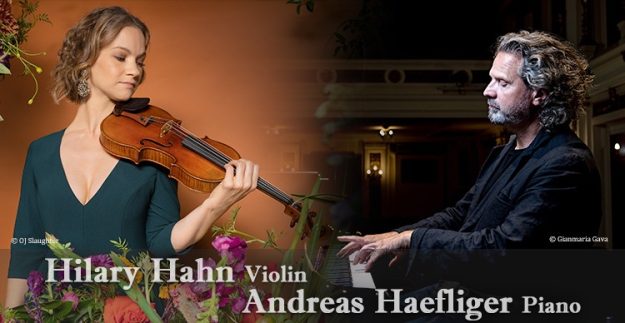 United Kingdom Brahms: Hilary Hahn (violin), Andreas Haefliger (piano). Wigmore Hall, London, 6.4.2024. (CSa)
United Kingdom Brahms: Hilary Hahn (violin), Andreas Haefliger (piano). Wigmore Hall, London, 6.4.2024. (CSa)

Brahms – Violin Sonata No.1 in G, Op.78; Violin Sonata No.2 in A, Op.100; Violin Sonata No.3 in D minor, Op.108
Brahms was one of the fiercest critics of his own work, and only three of his violin sonatas survive his rigorous self-censorship. To hear them played together in a single recital was to be reminded that they are some of the most inspired and ethereal in all chamber music. The first Sonata in G, Op.78, was written between 1878 and 1879 when Brahms was a mature 46, and the last two, Op.100 and Op.108 composed a decade later between 1886 and 1889. All three works are deeply reflective and richly lyrical, and each is inspirational in its own way. Yet as Brahms himself said, ‘without craftmanship, inspiration is a mere reed shaken in the wind’. Some may have wished for a more autumnal and wistful reading of these nostalgic works than the full-blooded, sumptuous, and occasionally and unashamedly symphonic account provided by Hilary Hahn and Andreas Haefliger in their latest Wigmore Hall appearance, but no one could doubt the technical mastery and virtuosic flourish they brought to these works.
The recital opened with Sonata in G major, Op.78, nicknamed ‘Regensonata’ (Rain Sonata). Brahms acknowledges its origin in Regenleid, a song he had composed earlier and recycled. The cascading opening Allegro – with its lilting melody – marked Vivace ma non troppo – was gracefully played, and despite this orchestrally textured interpretation, delicately evoked the steady patter of rainfall. The duo – two great soloists who are unified in their musical approach – perfectly captured the grand nobility of the slow movement’s hymn-like theme, while the finale, marked Allegro moto moderato, found violin and piano at once passionate, perfectly balanced and controlled.
Next came the second Sonata in A, Op.100, also known as the ‘Thun’ which Brahms composed while holidaying in the Alpine summer resort of Lake Thun in Switzerland. Anticipating the arrival of Hermine Spies ‘a beloved lady friend’, and clearly at the height of his creativity, he wrote that the place was ‘so full of melodies that one has to be careful not to step on any’. Hahn’s lilting legato and Haefliger’s powerful pianism made for a perfect and songful opening Allegro amabile, which was followed by a firm, unsentimental Andante, and a sunny, uplifting Allegretto.
The second half featured one work, the third of Brahms’s violin sonatas, Op.108 in D minor. The first movement Allegro – darkly nuanced and restless, unmistakably echoes themes from his Piano Concerto No.1, written almost 30 years earlier. In a performance of surging emotion and concerto-like heft, violin and piano skilfully exposed the barely concealed tension lying beneath the surface of the first movement Allegro. The two middle movements – a soulful Adagio and a Scherzo marked Un poco presto e con sentimento – were played with great tenderness, but never cloyed the senses. A fiery and triumphant rendition of the final Presto agitato concluded the formal part of the programme and brought an eruption of applause from the packed house, though it did nothing to assuage the audience’s appetite for more.
They were rewarded with two encores, William Grant Still’s gently cradling Mother and Child, and last, but certainly not least, a thrilling account of the Scherzo from the F-A-E Sonata for Violin and Piano, jointly composed by Robert Schumann, Brahms and his pupil Albert Dietrich. It was written as a gift for the great violinist Joseph Joachim, and the decision by Hahn and Haefliger to include it at the end of such a demanding recital was a great and generous gift to us.
Chris Sallon
